(Photo by Oleg Volk)
February 23, 2024
The SITES Spectre HC is what would happen if a Glock pistol had a baby with an Uzi submachine gun and that baby was stolen from the hospital and raised in Finland by a gang of art deco biker thugs. Radical and innovative yet in its semiauto form grievously flawed, the Spectre HC is as ugly as Yasser Arafat first thing in the morning after a hard night out on the town.

Origin Story
The Spectre HC was the semiauto pistol version of the SITES Spectre M4 submachine gun. SITES stands for Societa Italiana a Technologie Speciali SPA. Designed by Claudio Gritti and Roberto Teppa in the 1980’s, the M4 was originally produced at the SITES factory in Turin, Italy. The SITES facility closed in 1997, but small-scale production continued through Greco Sport S.A. in Switzerland. Swiss manufacture finally wrapped up in 2001.

SITES produced several different semiauto versions of the Spectre for civilian consumption, each particular weapon crafted to comply with the vagaries of the gun laws in the target countries. The American version was titled the Spectre HC and lacked both a forward handgrip and a folding stock. These weapons were imported as pistols with short 5.12-inch barrels. An 8.4-pound carbine version, with 16-inch barrel, was produced, but less than a couple hundred were imported into the USA according to some sources. Both versions were brought in by the Florida importer F.I.E..
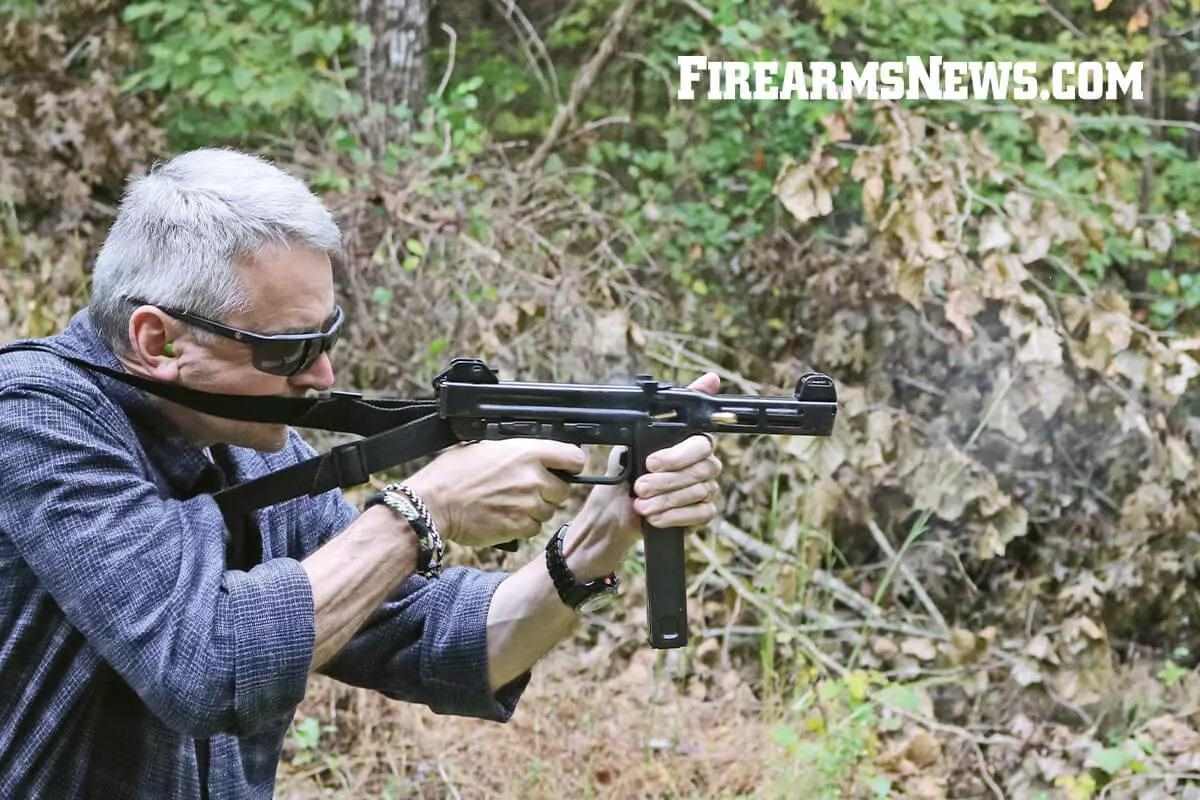
The SITES Falcon was a pistol version crafted for sale in Europe. These variants came with a removable foregrip and a top-folding stock for those places where this was allowed. The SITES Ranger was a sub-carbine version of the gun intended for the quirky Italian market. This variation came with a slightly longer barrel and had the folding stock secured in the open position. In markets where it was allowed, the stock was readily removable. The Italian variant required tools to remove the stock as that would make the gun shorter than the legally allowed minimum.
Advertisement

The Spectre HC pistol in the United States fell prey to US Federal Assault Weapons Ban of 1994, the carbine version “died” earlier as it was banned from import in 1989 thanks to Republican President George H.W. Bush who didn’t keep his “No new gun laws!” campaign promise. This closed off the most lucrative market in the world and eventually ensured the gun’s demise. In the 1980s, stubby rifle-caliber carbines were in their ascendency in military and law enforcement circles, while the Uzi and HK MP5 had a stranglehold on the pistol-caliber SMG market.
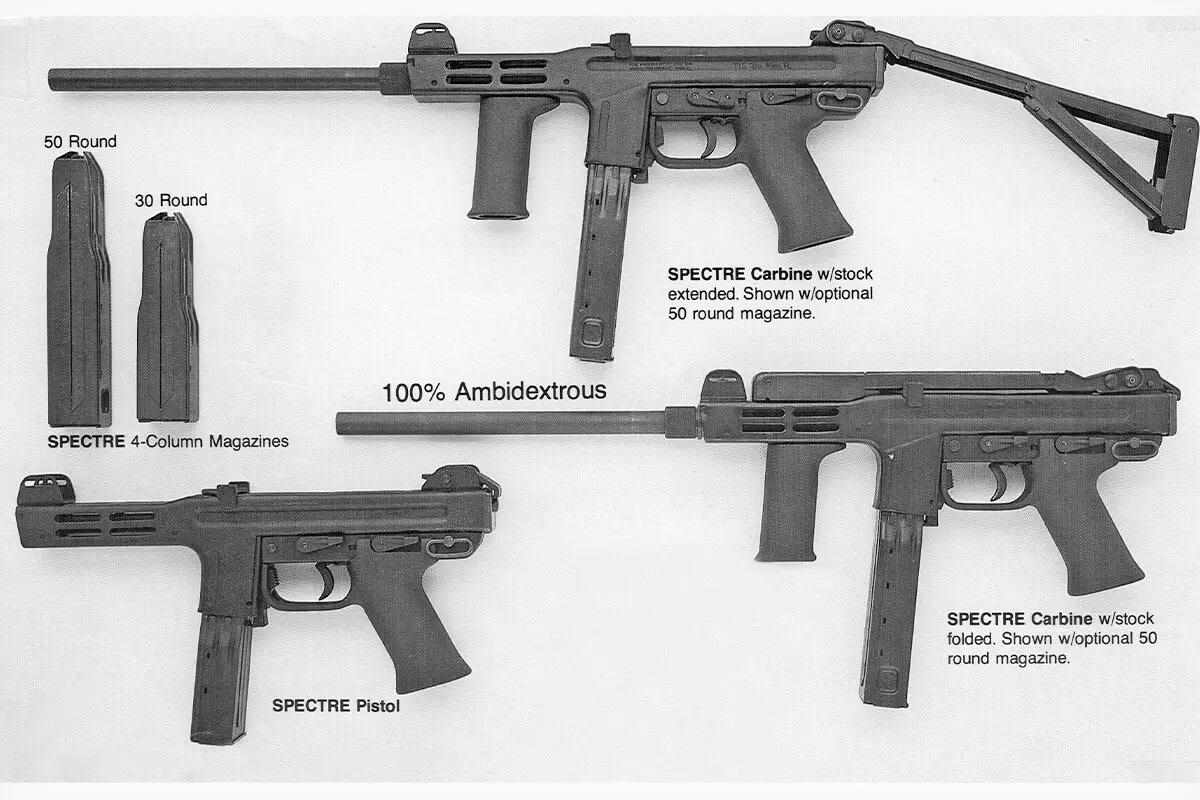
The French National Police used the Spectre SMG operationally, as did the Swiss armed forces as a weapon with which to arm special forces troops and tank crews. Special Ops and police units used a few in Italy as did both the National Liberation Army and Kosovo Liberation Army fighting in the Balkans. With the American civilian market curtailed and no major military contracts forthcoming, the Spectre M4 eventually died a natural death.
Technical Details
The Spectre M4 SMG was available chambered in 9mm Parabellum, 9x21mm IMI, .40 S&W, and .45ACP. The weapon was formed predominantly of heavy steel stampings with a polymer fire control unit. The gun was striker-fired and blowback-operated. It ran from the closed bolt in all modes of fire and cycled at around 850 rounds per minute.
Advertisement

The ignition system of the Spectre was described in promotional literature as double action only, but that’s not entirely accurate. The striker on the Spectre is
ample for its genre and could be visualized as a floating hammer that rode amidst the same recoil system as the bolt. In its resting state pulling the trigger completes compression of the striker spring before releasing the device to fire. The Spectre also includes a decocker device that will safely unload the striker. In this configuration it takes a long, double action pull to fire the first round. Both the safety and the decocker are reproduced on both sides of the weapon.

Much of the Spectre is indeed fresh and different. The rear takedown pin is retained via a nifty little pivoting loop spring. As this device incorporates the rear sling swivel it is subsequently readily reversible. The charging handle is a fairly flimsy polymer appendage oriented on the top of the receiver. It doesn’t reciprocate with the action, but the version of my example seems floppy and insubstantial. If that bit breaks the gun is well and truly deadlined, but it is easily accessed from either side.
Video That May Interest You

The rear sight is a fixed square notch that is too small for most pistol applications. The front sight is adjustable for both windage and elevation via a pair of nuts. One screw moves the sight up and down, while the other frees it to slide side to side. The magazine release is inexplicably located inside the trigger guard where it is genuinely tough to manipulate. Combine this with the fact that the magazines are quite sticky, and it can be a challenge to swap them in a timely fashion. However, with fifty rounds onboard ideally you wouldn’t need to do that too terribly often.
Coffin Mags
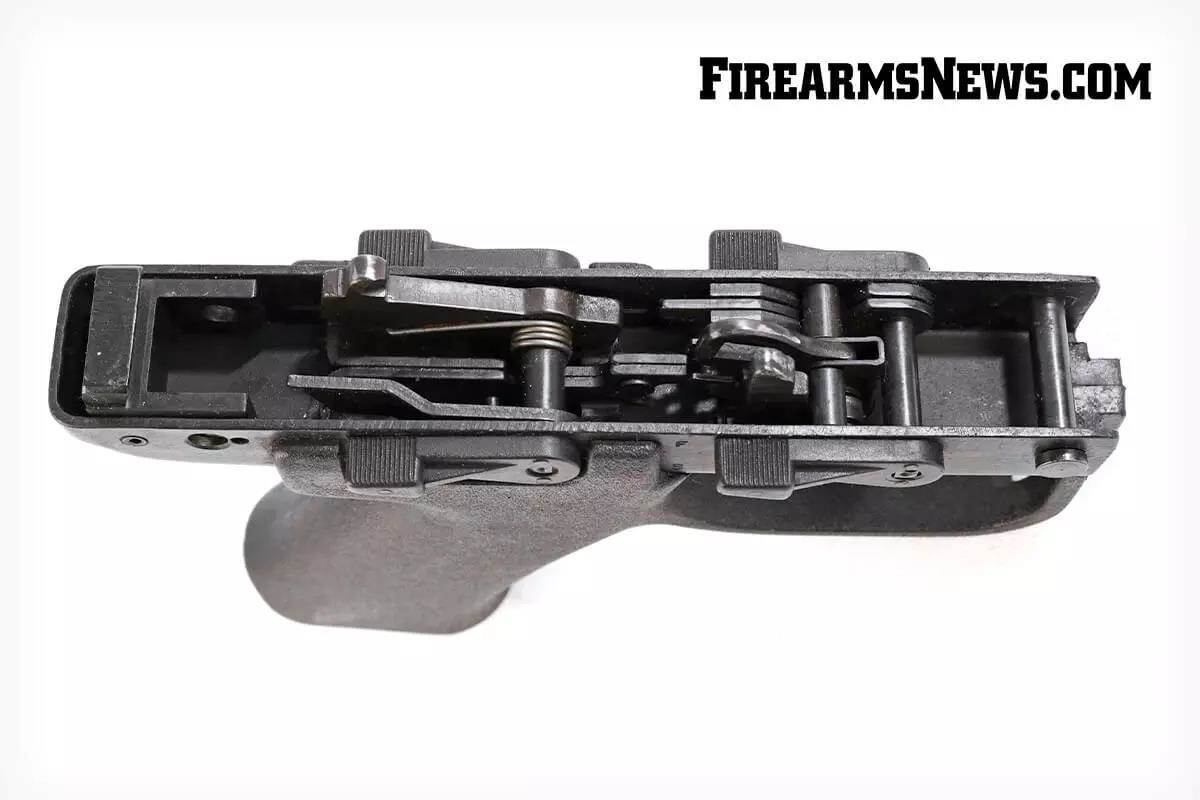
One of the most unusual features of the design is its feed system. The gun feeds from casket or coffin magazines. These unusual devices manage four columns of 9mm ammunition that taper up to a single feed. To accomplish this remarkable feat, reliably requires a novel pivoting follower that uses a roller bearing in lieu of a cast or stamped solid follower. In this respect, it is at least philosophically similar to the magazine follower of the Sterling submachine gun. These bulky four-column boxes came in either 30 or 50-round capacities.

Coffin magazines were first introduced with the Finnish Suomi KP/-31 submachine gun. They have subsequently been employed with the Chicom QCW-05 sound-suppressed submachine gun and several 5.45x39mm Kalashnikov rifle variants. The modern Surefire MAG5-60 is a similar magazine in production today. These magazines fit and function in any 5.56x45mm weapon designed to accept standard STANAG magazines while carrying a full 60-round capacity. Earlier versions packed 100 rounds onboard, but they are no longer in production.

The magazine that came with my Spectre HC technically carries fifty rounds, but it is extremely difficult to load to full capacity without a loading tool. The magazine strips easily for maintenance and incorporates two identical lift springs oriented side by side. The end result is shorter than most thirty-round SMG magazines while holding markedly more ammo. It is, however, quite heavy when fully charged.
Tactical Details
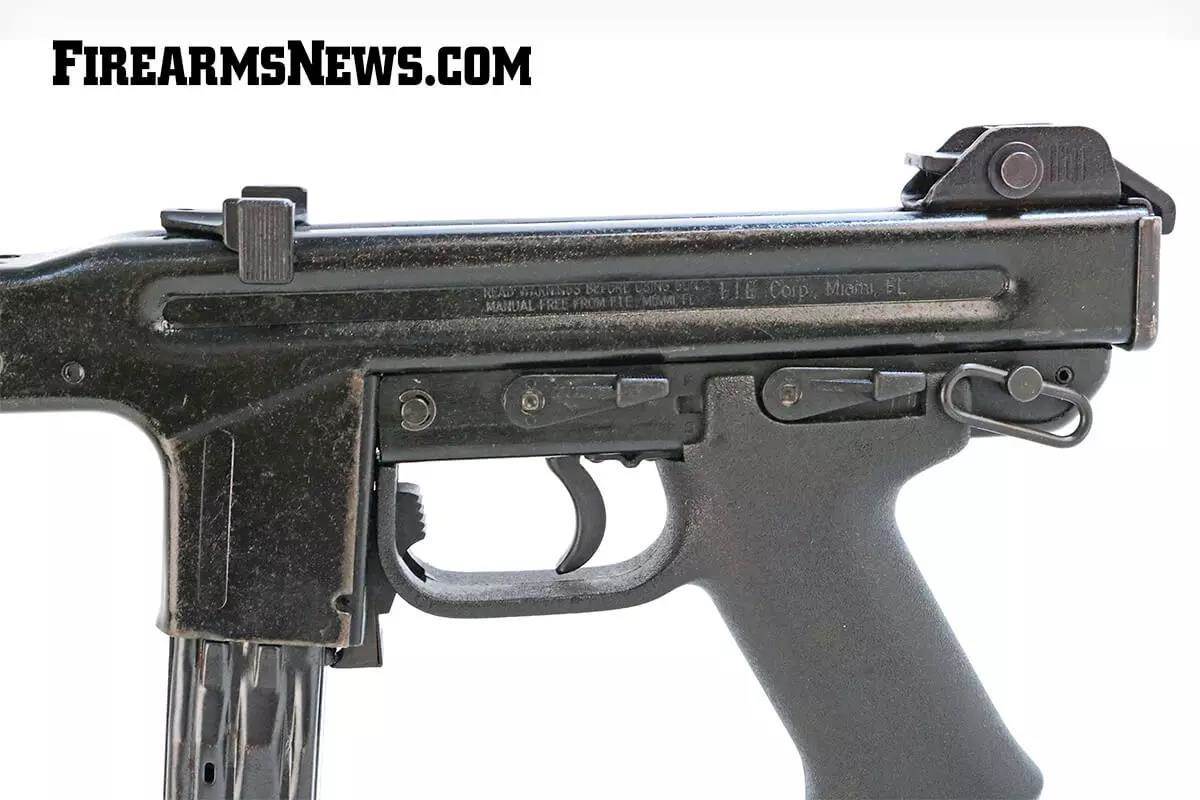
The Spectre was originally contrived to be the optimal military and law enforcement subgun. To that end, the receiver architecture was quite trim, and there were no protruding handles or ditzels to catch on anything. The coffin magazine maximized capacity for a given space. One of the complaints levied toward open-bolt SMGs like the Uzi and Thompson was that the mass of the bolt flying forward on the first round tended to be a detriment to accuracy. In my experience, that hasn’t really been an issue, but this was the reason behind building the Spectre as a closed-bolt, striker-fired design.

The additional complexity is indeed a consideration, but the Spectre is still hugely simpler than the HK MP5 with its roller-locked, delayed blowback action. A fair amount of effort was clearly invested to make the Spectre truly ambidextrous. All the controls are perfectly mirrored on both sides, and swapping the rear sling mount from one side to the other is painless. The design seems rugged enough. Had it hit the streets a couple decades earlier the Spectre HC might have made a more serious splash.
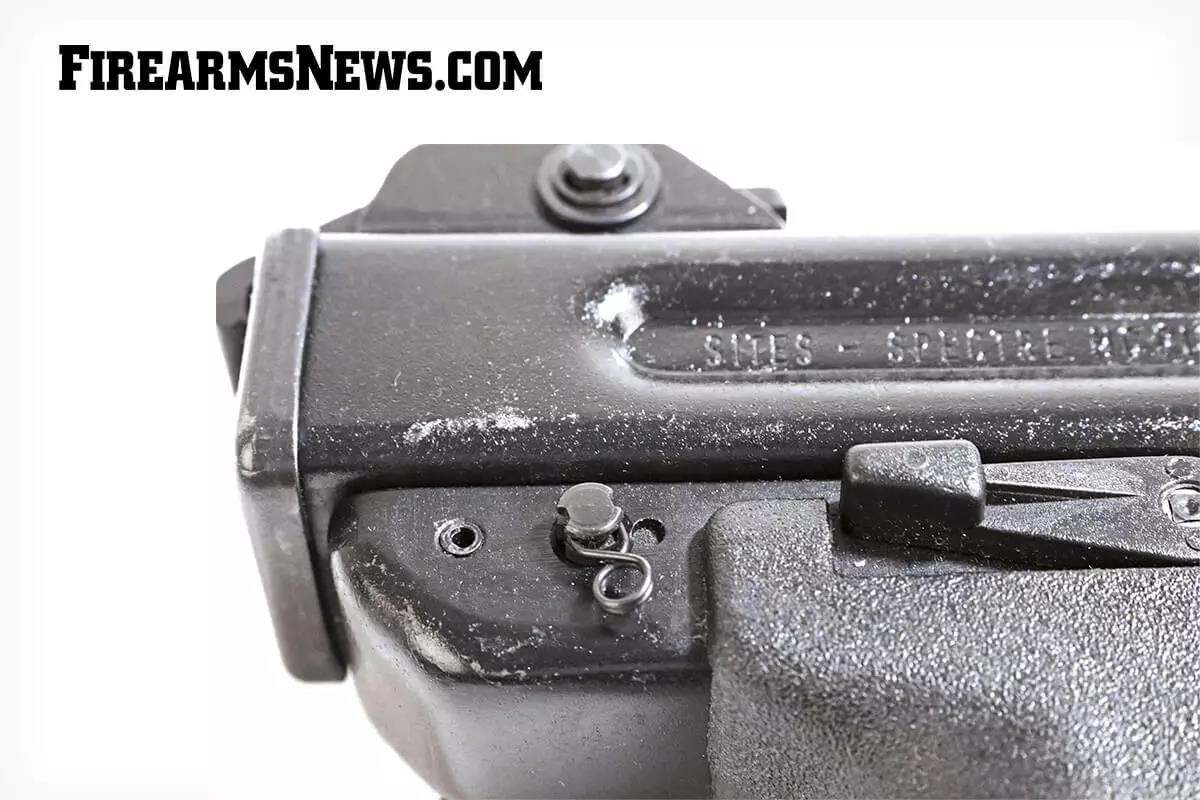
Weird Stuff
When first I was poring over my high-mileage example of the Spectre HC, I thought the barrel was shot out. The bore was a bit grimy, but there was no evidence of rifling remaining anywhere. Then I did a little research and found out that the barrel is polygonally rifled like those of certain Glock and HK handguns. As the name implies, polygonal rifling employs a helical polygon in place of traditional lands and grooves. The end result is less friction on the bullet and subsequently higher velocities. It is generally understood that the use of raw lead bullets in polygonally rifled barrels can result in an unacceptable buildup in the bore.


The Spectre and its curious decocker can produce some unexpected situations. In the original full auto version, there is no manual safety. The forward switch is a fire selector, while the aft switch is a decocker. To safe the gun you decock the action. To fire the weapon in this state requires a long and ludicrously heavy trigger pull. On the semiauto gun, the striker can be found in three different conditions. Fully cocked, the gun is ready to fire once the safety is disengaged. If the trigger is pulled on an empty chamber the floating hammer comes to rest fully forward against the bolt. In this condition the action must be manually charged to resume firing. No amount of trigger manipulation will put the gun back in action from this point.

If the decocker is activated with the striker back the floating hammer rides to an intermediate position. This is the state in which a long double action pull on the trigger will set the gun alight again. I would estimate that the trigger pull in this state exceeds twenty pounds. There is also a curious spring-loaded contraption on the bottom of the floating hammer that only allows the sear to retard this component in one direction. One unfortunate attribute of this design is that the semiauto Spectre guns were notorious for breaking firing pins. As you might imagine, spare parts for these guns can be tough to find. As a result, the Spectre HC is likely not the gun you want to use for high round count competitions and the like.

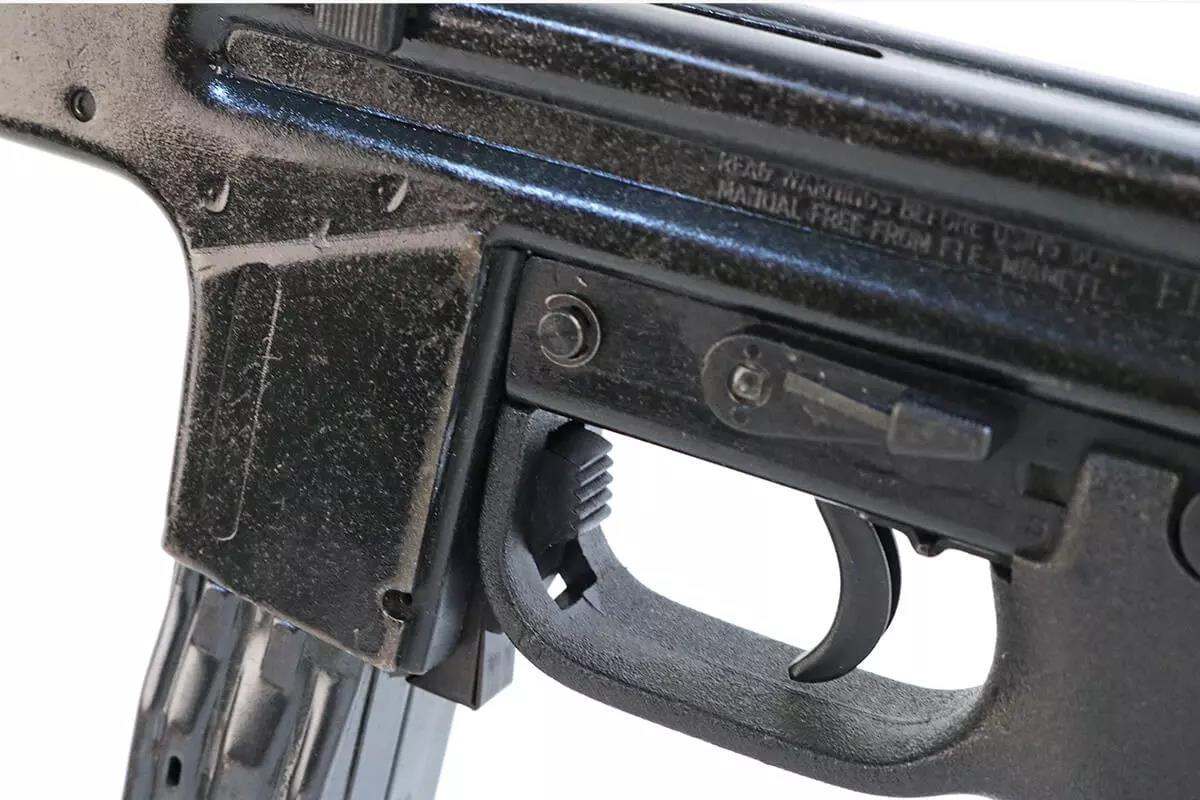
Trigger Time
In its standard state, the single-action trigger on the Spectre HC is a bit long and creepy but surprisingly light and pleasant. The sights are designed to be used with a shoulder stock, and are fairly precise from a rest. They are all but worthless when the weapon is run as a handgun. As a point-and-shoot platform along the lines of an M11/9 or TEC-9 the Spectre HC rates a solid average.
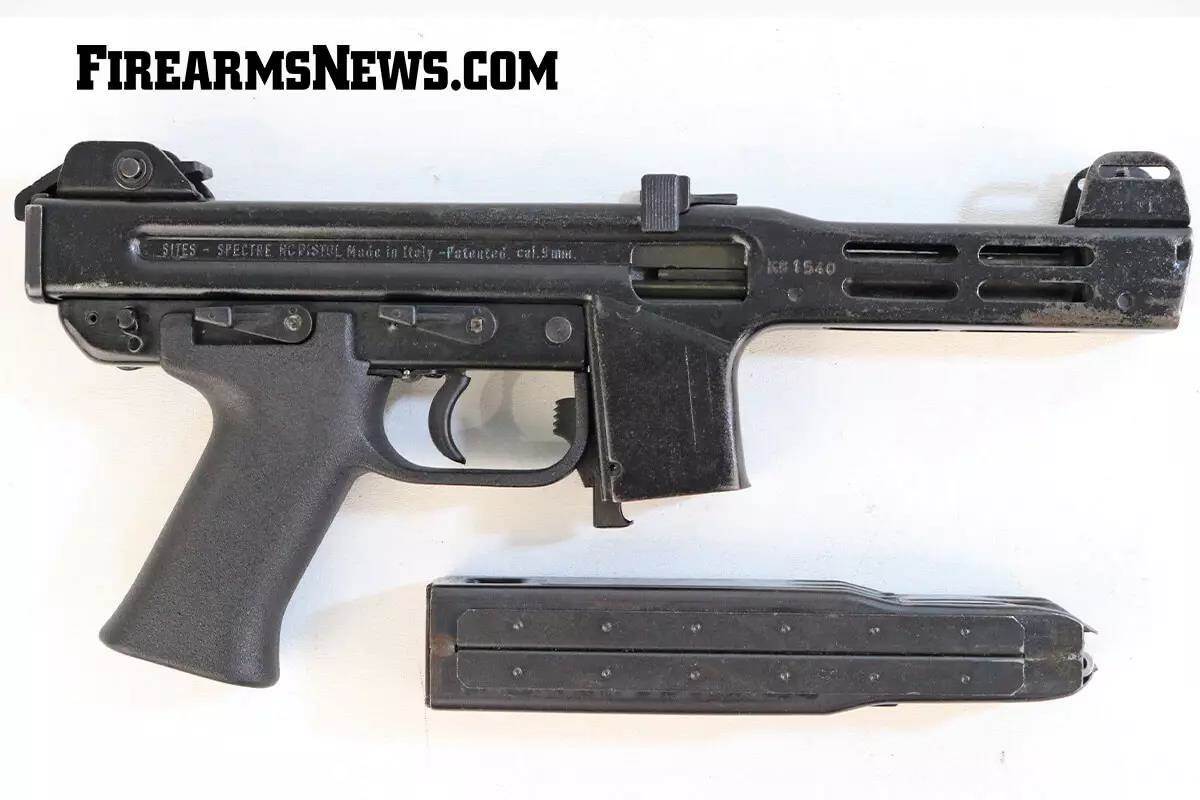
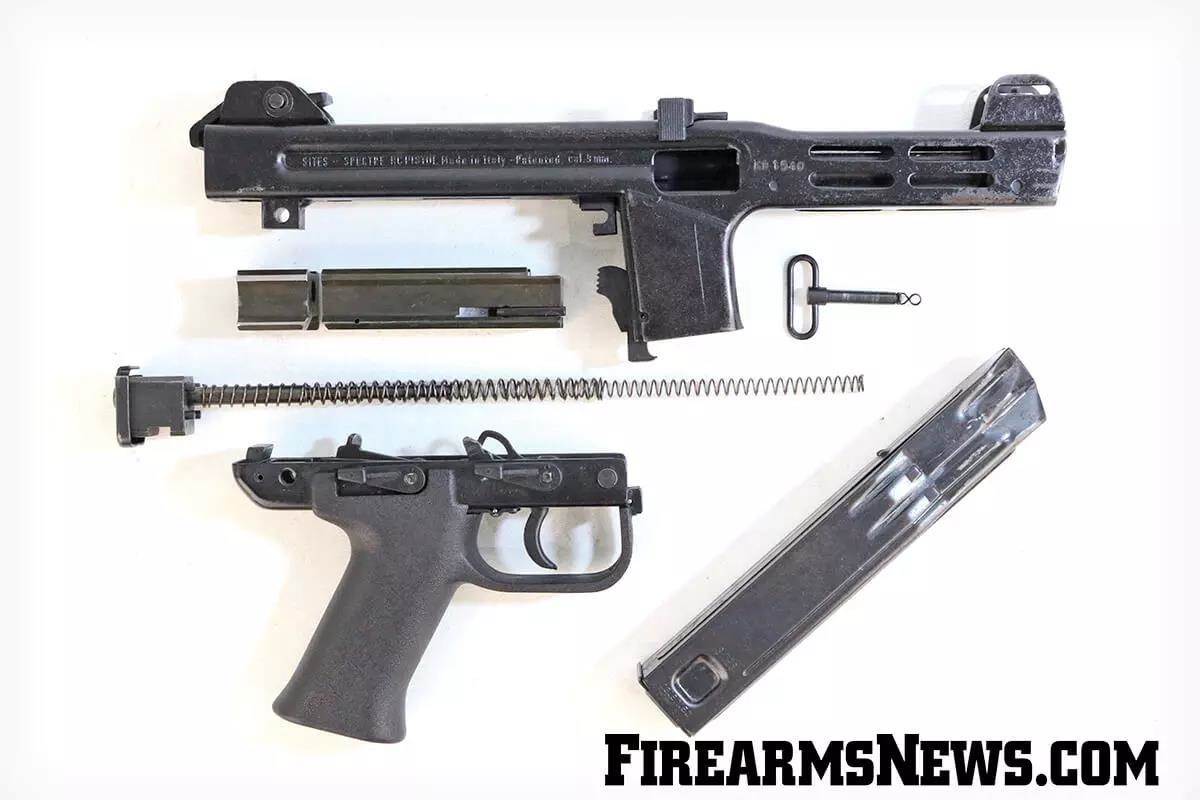
The fifty-round magazine is indeed a novel thing, but it is an undeniable chore to load and quite heavy. Additionally, the awkward magazine release and tight interface between the gun and the mag make magazine changes a butt whooping. Once you get everything set up, however, a full fifty-round magazine will let you shoot until you get tired of shooting.
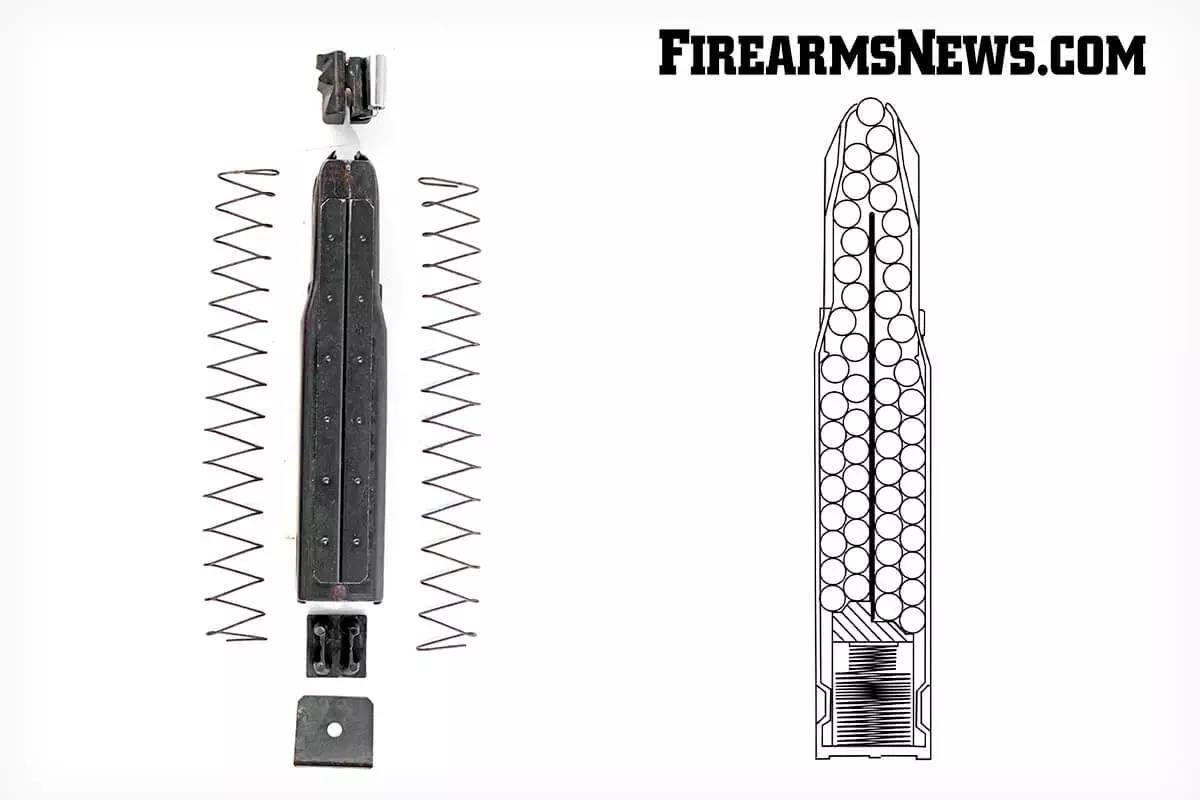
To run the gun practically would require hanging it from a sling in the manner of an HK MP5K. With the weak hand around the magazine and the weapon stabilized against sling tension a determined operator can keep his rounds on a standard silhouette out to twenty-five meters or so. In its defense, the Spectre is indeed incrementally smaller and lighter than a comparable Uzi while sporting a nicer trigger.
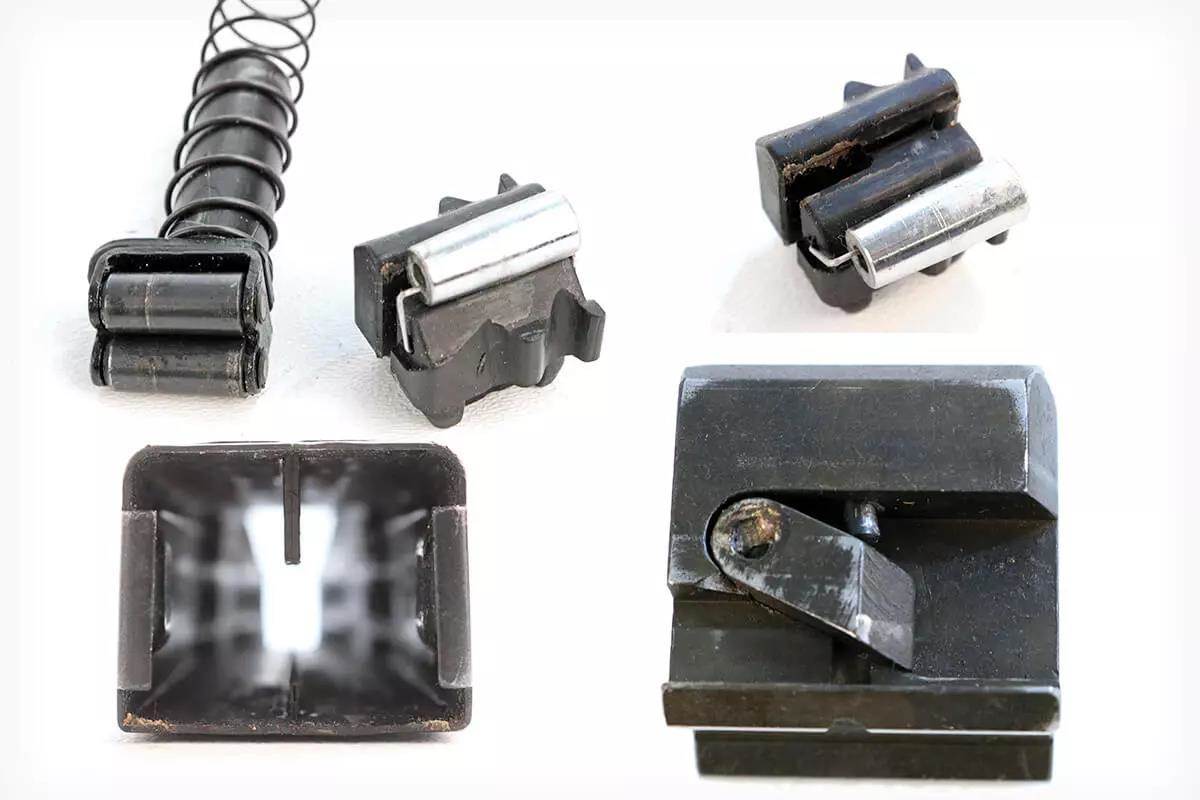
None of this really matters. On my gun at least, if you have the mechanism on safe and give the trigger a proper squeeze the safety will disengage of its own accord and the weapon will fire. This is an unfortunate side effect of having adapted the original fire control mechanism into a safety. However, a safety that is less than perfect is obviously a show stopper these days.
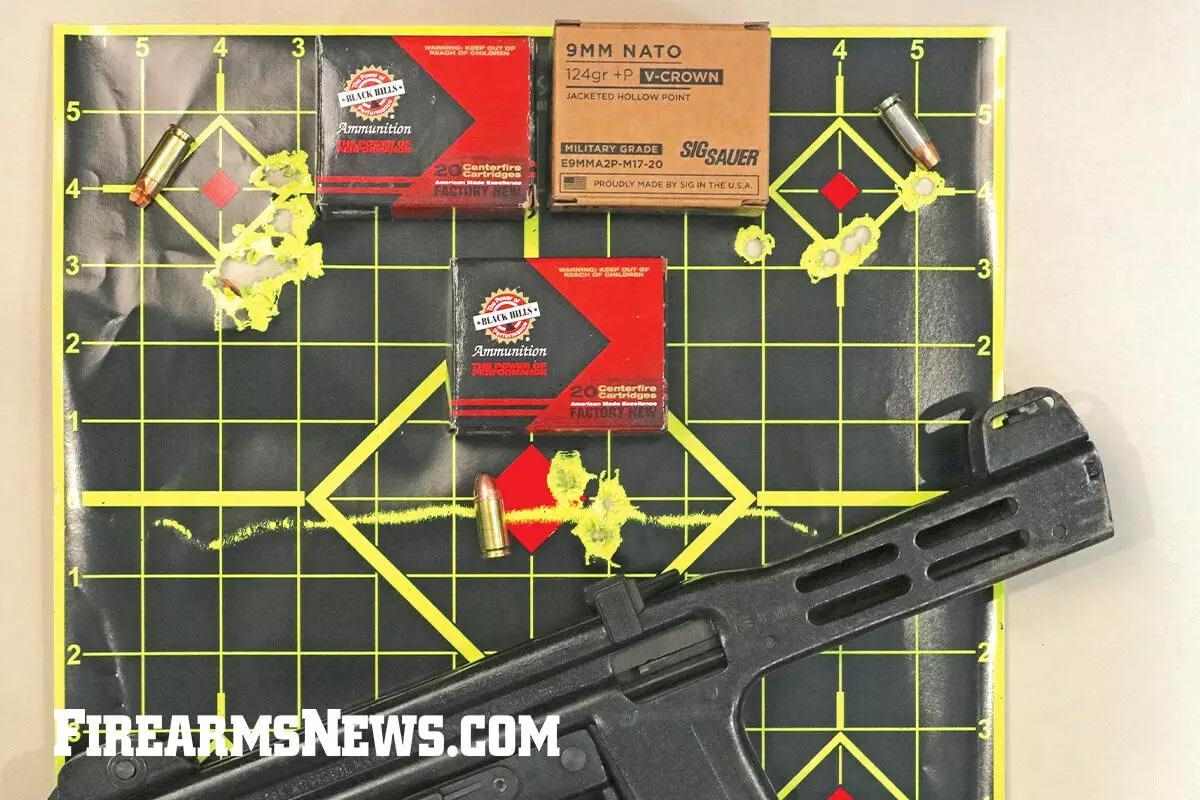
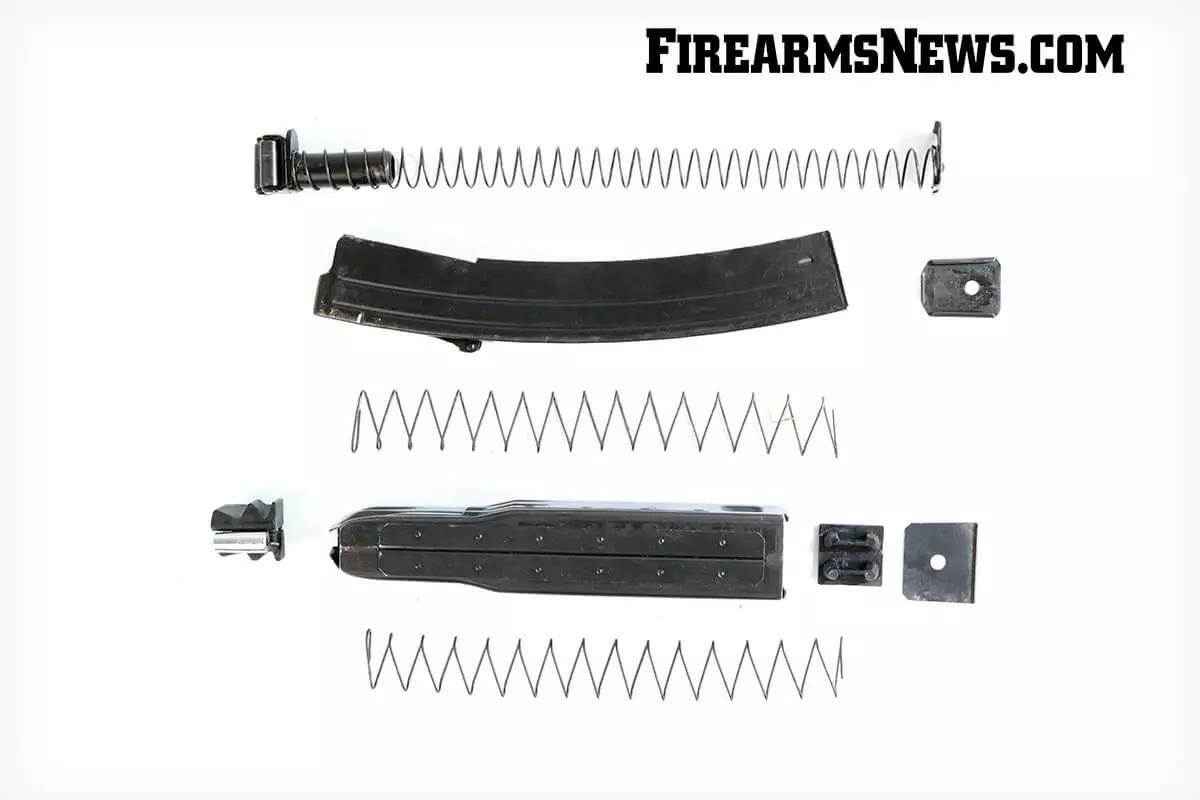
Ruminations
The SITES Spectre HC suffered from some unfortunate timing. This gun and the SMG that inspired it were fraught with commendable features. However, the Assault Weapons Ban took the wind out of its sails at a critical time, and the brand never recovered. When competing against inexpensive domestically produced weapons like the Cobray M11/9 that sold for a fraction of the price while doing essentially the same thing the Spectre really never stood a chance.
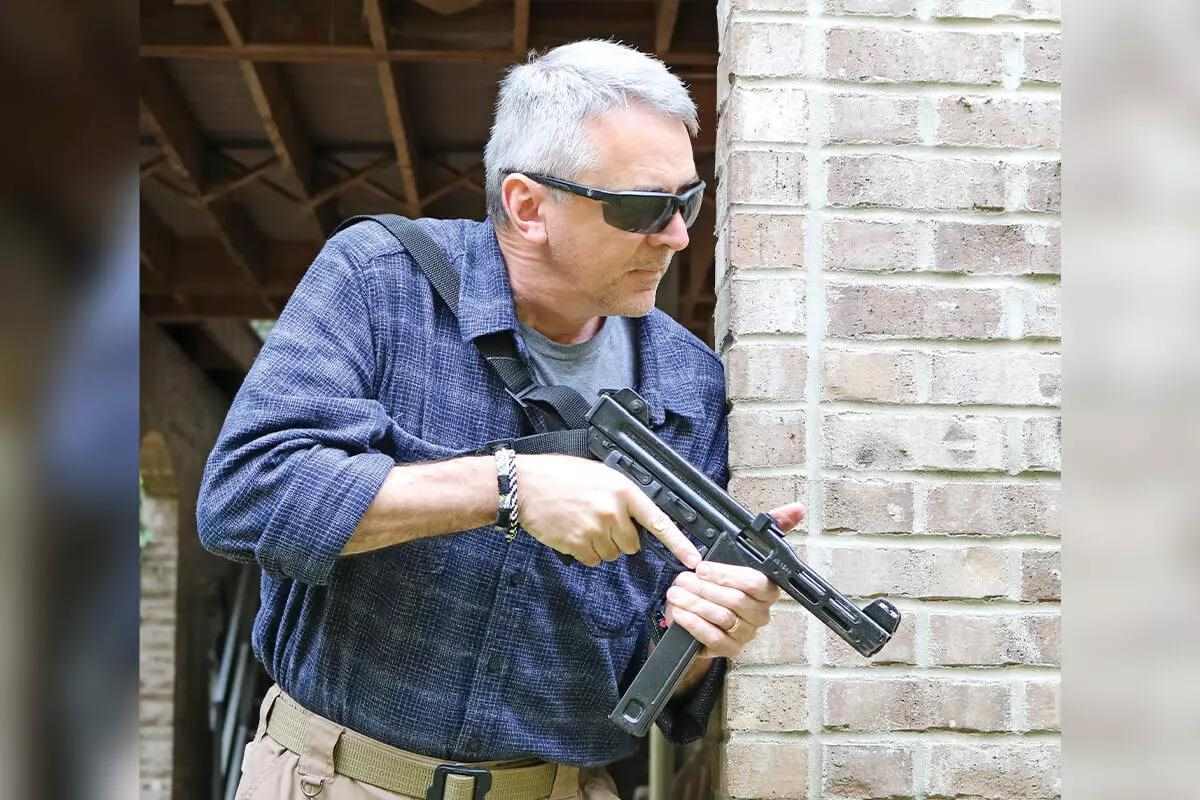
I’ve read that there were only 1,000 9mm Spectres imported alongside some 300 guns in .40S&W and another 100 copies in .45ACP. Given that there are so many more efficient options for tossing 9mm Parabellum rounds downrange the Spectre remains little more than a novelty today. Regardless, this weird little gun does make for a curious addition to any nicely-seasoned modern black gun collection.
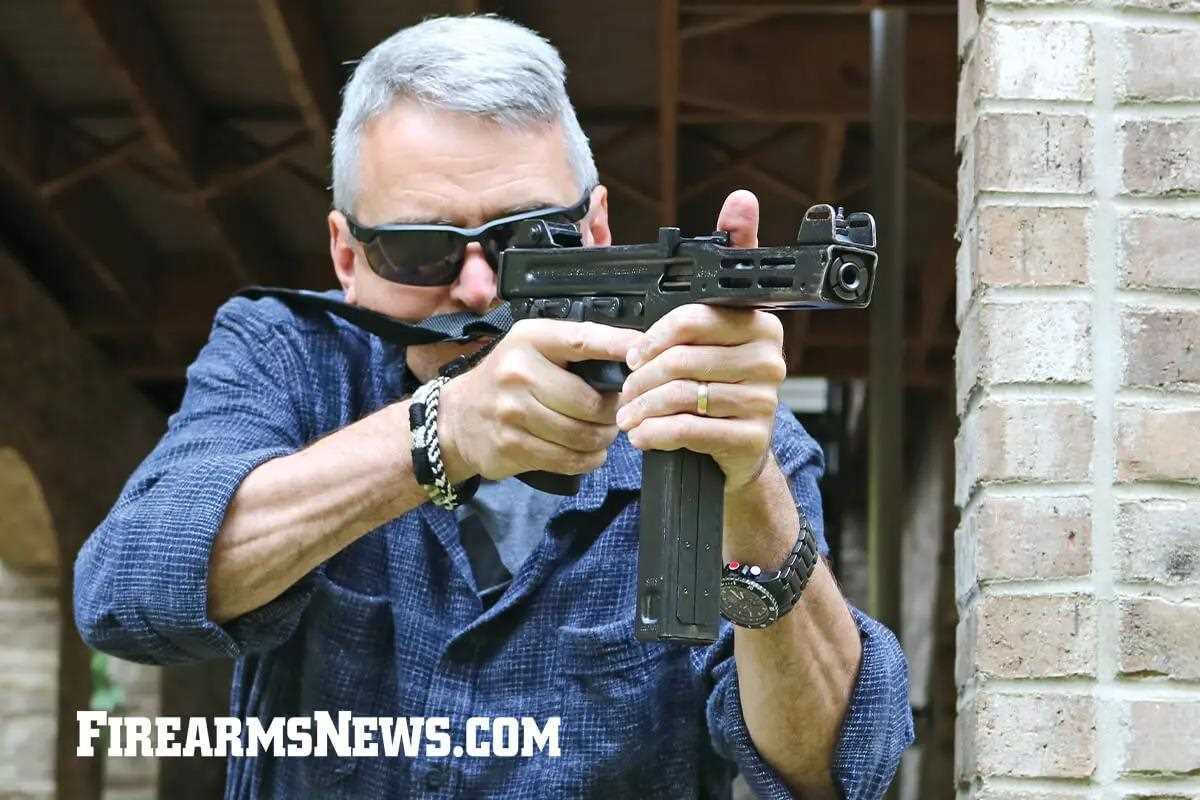
If you have any thoughts or comments on this article, we’d love to hear them. Email us at [email protected].
Read the full article here

